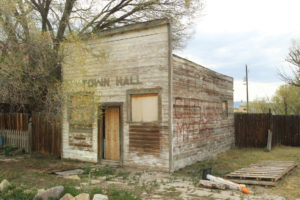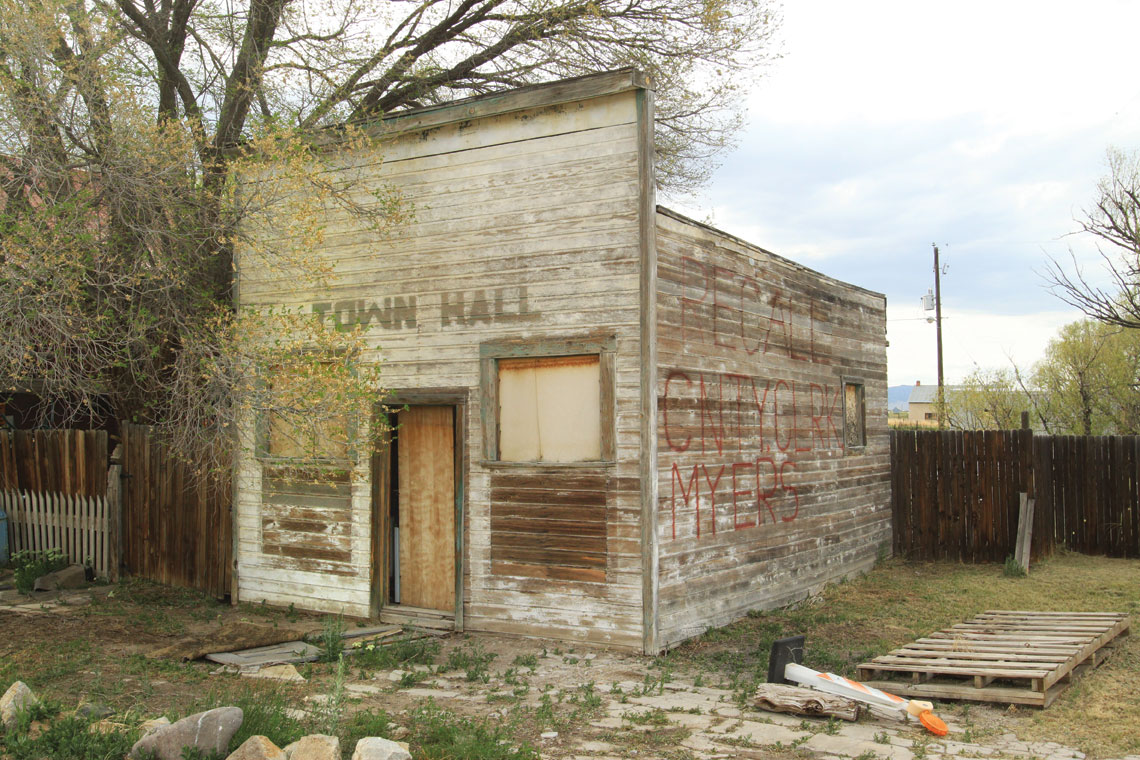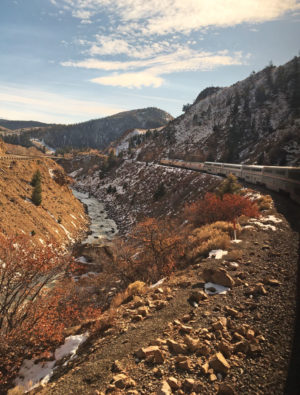By Kenneth Jessen
Moffat came close to becoming a town of great importance in the north-central part of the San Luis Valley. Historian Holly Rechel-Felmlee wrote about Moffat in 1980: “A cold wind blows through, swirling dust around old buildings. One can hear the swings on the playground squeaking and a loose door slamming open and shut. At each house a dog barks, hailing arrivals. Most of the houses (however) are closed tight.”
Little has changed over time except the tragic loss of an entire block of buildings to a fire in October of 2019. Rechel-Felmlee concluded, “There is so little life that a great horned owl perches daily in a second floor window without fear of harassment.”
Moffat founding was in 1890 by the San Luis Town & Improvement Company, a subsidiary of the Denver & Rio Grande R.R. Its manager was David Adams, owner of the Baca Grant No. 4. He named the town for the railroad’s president, banker David H. Moffat.
The year the town was founded, the Denver & Rio Grande completed its valley line from Villa Grove to Alamosa through the town. The last spike was driven on this narrow gauge line 17 miles north of Alamosa, and it became the longest section of straight track on this otherwise twisting mountain railroad. During the early days, cattle supported the economy. Moffat once had a brick hotel, a couple of general stores, three restaurants and its own newspaper, the Moffat Ledger.

In 1901, based on increased mining activity within the Baca Grant No. 4, a subsidiary of the Denver & Rio Grande constructed a 17-mile branch due east of Moffat to Crestone. At Crestone, the line turned south, ending at the long deserted town of Cottonwood. Development stagnated until 1908 when the Oklahoma Land & Colonization Company purchased a great deal of land in the area. They also constructed a hotel. The number of town lots in Moffat expanded to nearly 4,000, a figure impossible to believe based on a contemporary visit to the town.
The land was subdivided and sold off in tracts of up to 160 acres. Prospective buyers could purchase a ticket for a random drawing allowing them to bid on a particular piece of land. A crowd estimated at 2,000 showed up for the drawing. In anticipation of getting some land, people slept in tents while hundreds crowded into the hotel. Guarantees were made that each tract would have sufficient water. Like so many land promotion schemes, the company never fulfilled its promises.
For a while, Moffat boomed. Rail yards were constructed, and by 1911, the town had a bank, four hotels, lumberyards, livery stables, barbershops, two saloons, a doctor, its own town marshal, a jeweler and a Baptist Church. School enrollment climbed, and all 12 grades were taught. As predicted by newspapers of the day, what ended the dream for many was lack of water. Much of the surrounding soil was good and crops grew well, but only with sufficient water. Farfetched plans for an irrigation district, with a large reservoir and many laterals, never materialized. The boom ended, and further attempts at land development failed. Without water, farmers sold their land. Much of the land reverted to open range, and in some areas, salt leached up from the poorly-drained soil, poisoning the crops. Moffat dwindled in size to a very small population.
Ken Jessen teaches adult education at Colorado State University and is always on the hunt for the history of Colorado’s towns.


